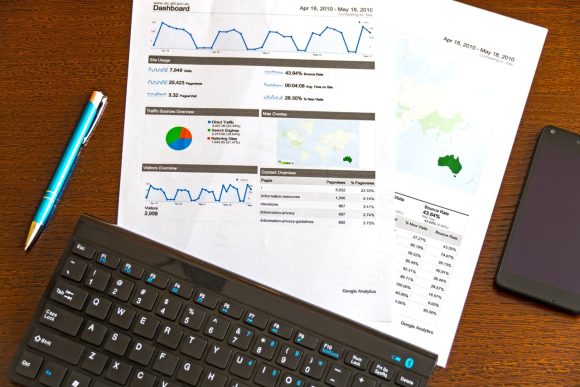Experience measurement helps brands and organisations assess their performance. It involves inviting feedback from key stakeholders – usually on an ongoing basis – to understand how their brand, organisation and product/service is perceived and how it is performing.
Over time, this feedback builds up a picture of whether progress is made and can help to indicate where action plans need to be put into place. It can encompass customer experience, employee experience, brand experience, product experience, user experience, patient experience and more.
Experience measurement v Experience management
Although they are considered the same thing (they are closely related), they are actually the opposite ends of the same spectrum that overlap with each other.
Experience measurement is the collecting of feedback to measure an experience – whether it’s customer, employee, product or something else. The measuring of this experience puts into place a strategy for improvement.
Experience management is the process of collating multiple experiences by the same customer to inform a strategy for improvement.
Both are two vital components for taking strategic action based on feedback.
How do you measure experience?
You measure experience by first identifying the areas you would like to gain an understanding of. Next, you invite feedback from those who have the most knowledge.
If you are looking to measure the experience of your employees, you will put together a survey that asks the key questions about their employee experience.
The final (and possibly the most crucial) aspect is the analysis of feedback.
There may be too many responses for you to read and remember the key details from, so it’s important to use an experience measurement platform that can run both simplified and complex reports that analyzes your data for you.
These reports can give you top-line insights (such as 92% of employees enjoy working from home) as well as deep-dive analysis (such as what your employees think of working from home in a specific age range, compared by different locations).
Experience measurement v customer experience
The difference between experience measurement and customer experience is simple: customer experience relates only to one segment of the much broader experience measurement concept. Customer experience is all about the interaction a customer has with you and whether it was positive or negative.
Experience measurement, meanwhile, encompasses a broad range of experiences such as brand, employees, user, products and patients, in addition to customer experience.
How do you measure customer experience?
The best way to measure customer experience is by inviting feedback after each interaction like after a purchase, store visit or website interactions.
You can also learn a lot about the customer experience by analysing performance metrics such as annual sales, footfall to a bricks and mortar site, digital traffic or number of app users.
Customer experience can be measured in 6 ways:
- Using online and paper surveys to get detailed customer feedback
- Finding your NPS score (when a customer is asked if they would recommend your product or service)
- Use digital analytics tools to understand how customers interact with your website
- Measure customer satisfaction scores
- Analyse footfall to your premises and web traffic online
- Measure frequency of customer visits and their total spend
- Customer retention campaigns and analysis
According to hubspot, companies that prioritised improving customer experience saw a 92% increase in customer loyalty, an 84% uplift in revenue, and a 79% cost savings.
It makes sense. Happy customers usually become loyal customers.
So listening to customers and acting on their feedback is a great way to drive brand loyalty.
How do you measure student experience or education experience?
Measuring the student experience (also known as education experience) is important for assessing the quality of education provided as well as other services – such as accommodation, facilities, recreational groups, nightlife, mental health support and more.
These are crucial areas to get feedback on because they make up such important areas of the student experience.
In the age of social media, word travels fast. And researching has become part and parcel of decision making. Therefore – if student accommodation is substandard or if there is little fun to be had outside of studying – then not only will this affect current students, but it will likely affect the number of applicants in the coming years.
Other key metrics for measuring student experiences (unrelated to surveys) can easily be identified.
Exams are the most obvious and high profile way of measuring the quality of education but there are many more.
- How many applicants there are each year
- The number of prospective students that enrol
- How many students drop out from higher education
- The number of undergraduates moving into postgraduate study
- Career outcomes for students
A student satisfaction survey is also one of the best ways to measure the student experience as it involves direct feedback.
Measuring patient experience or healthcare experience
Measuring patient experiences (also known as healthcare experience) is crucial to improving the healthcare services that help save lives every day.
You can measure patient experience in waiting rooms or after appointments with a paper or mobile survey. This captive audience is great for ensuring a high response rate as most people will be happy to answer a few questions while they are there.
Surveys can be used for all aspects of care, such as:
- Community care
- Hospitals
- Mental health services
- Maternity services
- GP and dental practices
- Emergency care
- Patient transport
Paper surveys offer an excellent way to get quick feedback following an appointment, and are particularly useful for people who may not have a smartphone or be comfortable holding a tablet.
Find out how Snap Surveys can help with healthcare experience measurement.
Our dedicated team can even scan in your paper surveys manually, enabling you to run reports on your data digitally.
Measuring Employee Experience
Employee experience measurement is the best way to understand employees’ feelings about their place of work. It’s key for maintaining a positive working environment.
Low morale among employees leads to high turnover rate, which can have a big strain on the productivity of an organisation. This can lead to a loss in revenue and even reputational damage if disgruntled employees take their concerns to social media.
Two of the key employee experience measurement surveys are:
- Employee satisfaction survey
- Employee engagement survey
There is a crucial difference between these surveys.
Satisfaction refers to employees’ happiness with their role, with their colleagues and the overall experience they have at work. However, this does not take into account whether they are fully committed to the organisation.
An employee engagement survey looks at how engaged an employee is with their role, within the team and the wider organisation. Do their values align with those of the organisation? Are they fully committed to helping the team achieve their goals? Are they proud of where they work?
These are the key aspects of an employee engagement survey.
Together, these surveys give an excellent overview into an employee’s feelings about their working experience.
Here are some of the ways you can measure employee experience.
- Onboarding survey following the induction process
- Annual performance review
- Remote working survey
- General employee experience survey
- Exit survey to find out why an employee is moving on
Check out our 2021 Workplace Survey Solution – featuring questions about remote working and returning to the pre-Covid workplace.
It’s a pre-built solution that is ready to run straight out of the box.
Measuring user experience
The measurement of user experience includes products, services and applications – such as a video game, a smartphone or a brand’s official app.
Trials and demos of a product before it is released can reveal problems that need to be fixed before it’s too late. For example, gamers are often invited to play a video game throughout its development so that developers can get immediate feedback.
In the world of ecommerce, customers may be asked to use a company’s website while wearing special eye tracking technology, allowing the company to see where the average person’s eye is drawn to on the page. This can inform them where to place products they want to customers to see the most – such as those with the highest profit margin.
Many websites have a ‘feedback’ button that allows people to flag up technical issues like broken links or incorrect product information.
It’s all about creating a seamless user experience to keep the user coming back.
Measuring brand experience
Brand experience is the reaction people have to your brand and the perception they have of you.
This can be an emotional reaction, such as warm feelings of Christmas when thinking about Coca Cola’s festive commercials, or physical, such as how an athlete performs wearing a certain footwear brand compared to another.
A viral marketing campaign from UK fast-food company, Greggs, featured them getting people at a food festival to try their food under the guise of it being a different brand with different presentation. The self-proclaimed “foodies” waxed lyrical about the richness of the food and were shocked to find out the truth.
This proves how important brand perception is and why companies should prioritise the brand-experience metric.
Experience measurement platform that does the hard work for you
Our platform, Snap XMP, is the perfect experience measurement device to help you uncover next-level insights.
Get feedback on any device, online or offline, with deep-dive analysis capabilities from smart reporting features.
It’s the proven way to measure experience and get the insights to drive your strategy.

